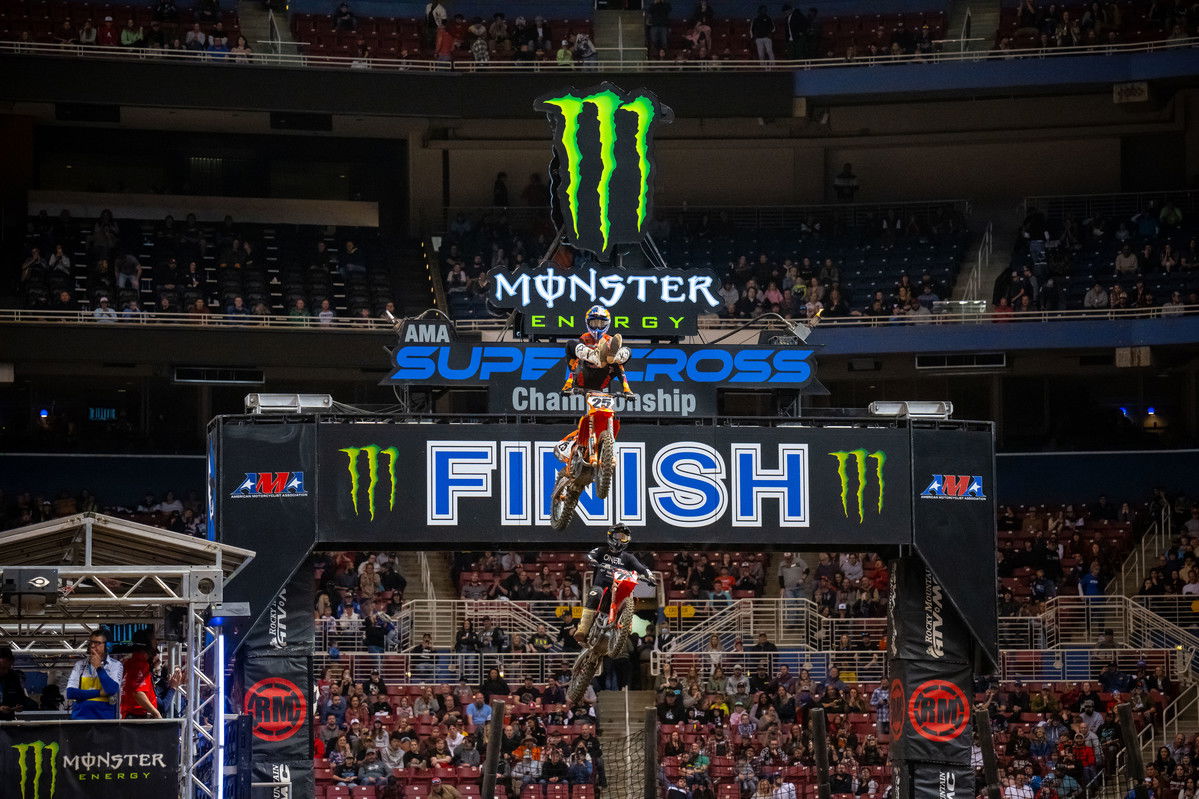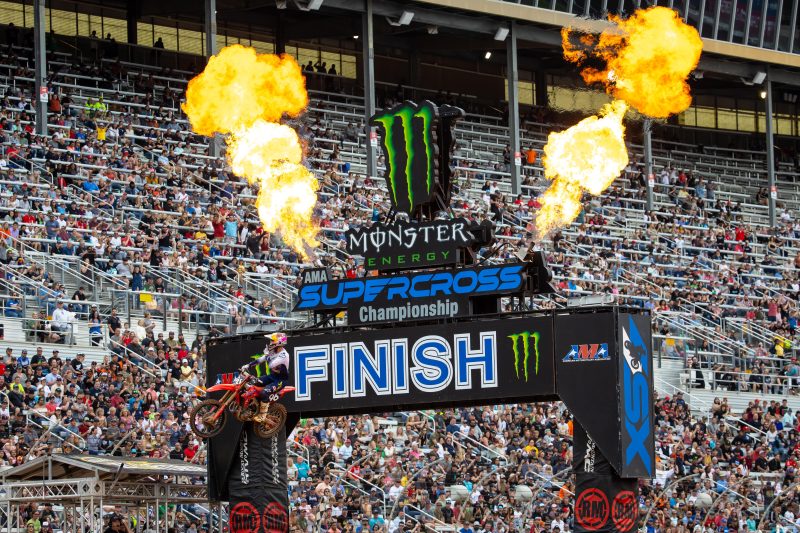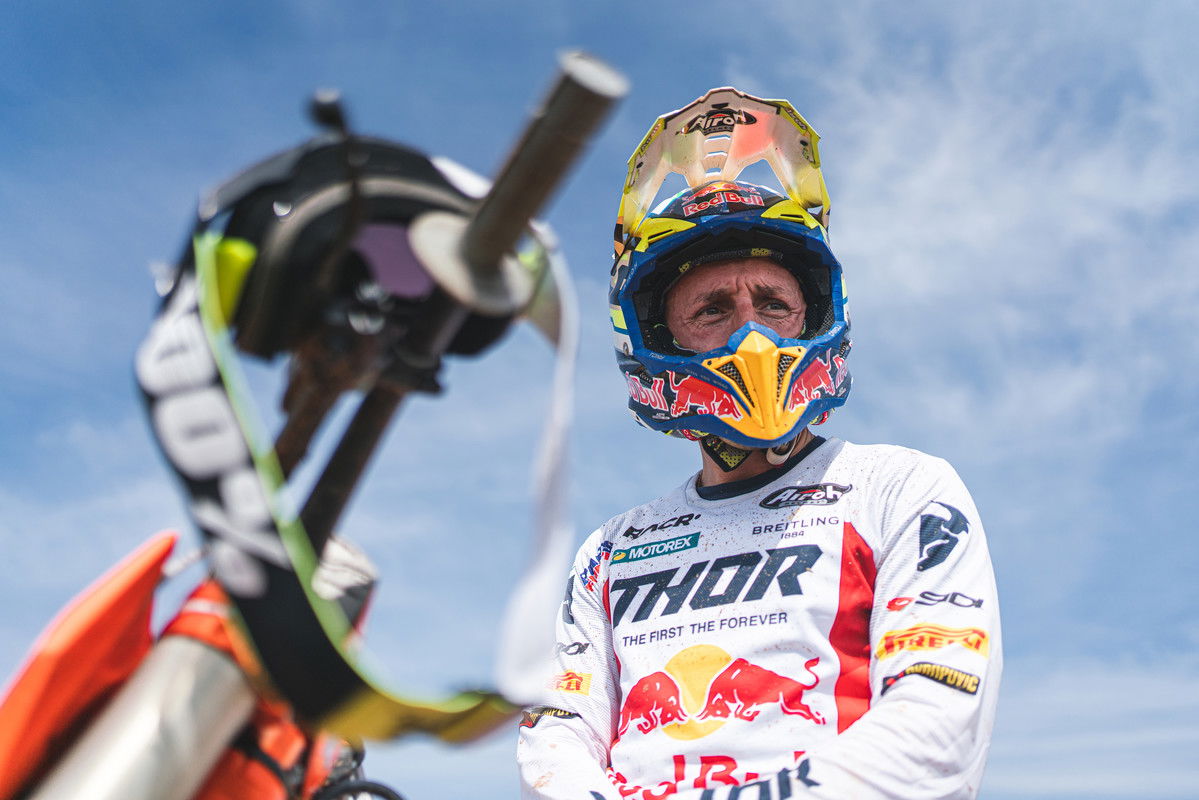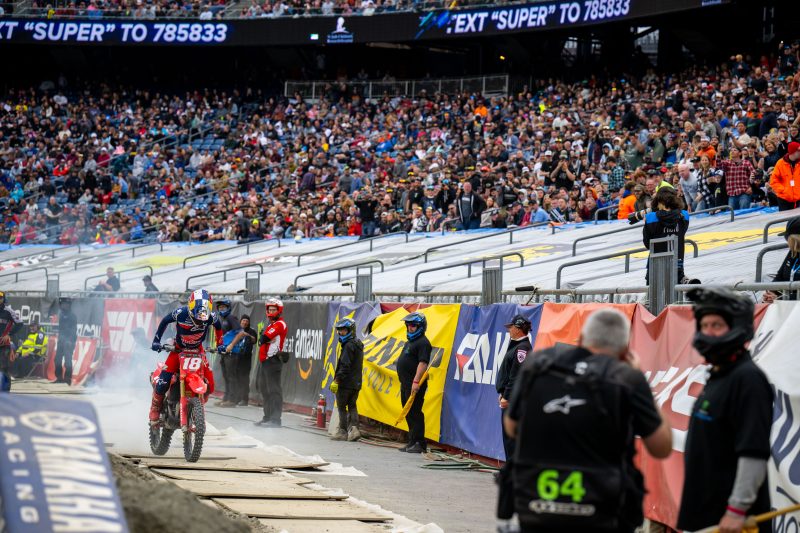Why the Atlanta race shows Supercross needs some more speedways
The 2022 Atlanta Supercross might be remembered more for the day before the race, than for the day itself, but that does not mean the races were dull.
.jpg?width=1600&aspect_ratio=16:9)
Atlanta Motor Speedway’s return to the Supercross calendar for 2022, after debuting last year, was mostly positive: it provided decent racing in both classes, unpredictable action and opportunities for riders to distinguish themselves.
Supercross is a fantastic racing series and format as it is. Two heat races, a last-chance qualifier and a Main Event per class at each race works well, and has worked well since this format was adopted back in 2018. Which makes it only more admirable that Feld, the promoters of the series, continue to work to improve it.

The Triple Crown format we have seen three times this season, most recently in St. Louis - the race before Atlanta - was part of this work and- in the same way Dorna improved the show of MotoGP by changing the qualifying format in 2013, Feld’s introduction of the Triple Crown format has been, overall, a success.
Triple Crowns are not perfect. They can often lead to a third race where the overall result is already decided, and the riders seem to not be a fan of starting three times in one night for no extra reward. But, they add something different, a change to the norm that can, in the right circumstances, be even more entertaining than the regular format.
That is similar to the Atlanta experiment which began last year. In 2021, there were three races, and they were memorable for a few reasons: the huge length of the track, and the long lap times that resulted; the mixed up results; and a race which was one of the most important in the 2021 450SX title battle. This year, there was just one race and, from a perspective of wanting a distinctive race, that was a positive.
The track will be mostly remembered for one jump. After the mechanics area was a right hander, which was followed closely by a 100+-foot triple. The speed at which the riders were hitting the jump to clear it on Friday (press day), in combination with the height they reached off the jump, meant the landing was one of the most high-energy impacts of the year. It was complicated by a short, steep landing, which left the riders with very little margin for error on the biggest jump of the season.
That caught out many riders, none more so than Hunter Lawrence, who was keen to point out after the fact - both in PulpMX’s post-race podcasts, and on Monday’s PulpMX Show - that he did not complain about the jump.
This was an important point for Lawrence to make for himself, because he took a lot of online flak for the jump being altered for race day. It was shortened slightly, and the landing was made smoother, so the margin for error was greater.
You could argue that, as a rider, you could just not jump the jump, and single-double it instead. That would be safer on your own, but in a race, with riders behind you, that could be more dangerous than just jumping it. Overall, the decision to change the jump was the right one from a safety point of view, and from an entertainment perspective, because it is not very fun to watch 10 riders crash out of a Main Event.

Also on the PulpMX Show, Lawrence complained about the abnormality of the obstacles in Atlanta, that the unusual jumps and sections made the track sketchy. From the perspective of someone who has not, does not, and will not race Supercross, at any level, to object to an opinion by someone like Hunter Lawrence, who races for factory Honda and has won the last three Supercross races he has entered - including last weekend’s 250SX East/West Showdown.
However, it does appear strange that one of the riders who is one of the best in the world at supercross has complaints about obstacles being different from the norm. Although it has lost its FIM World Championship branding for 2022, the AMA Supercross series features the most skilled riders in the world, and from an outside perspective, it seems obvious that those riders should be able to adapt to a track which throws up different - but not dangerous, like the aforementioned 100-footer - situations and scenarios.
Atlanta threw up some unusual sections, even after the alterations for Saturday, like the container jump - which was originally a double, but changed to a single for Saturday, and saw some riders being conservative and down-siding it, while others launched it a bit more out to the flat. That was great, as was the flat 180-degree corner at the top end of the track which saw one of the most exciting moments of the day when Eli Tomac and Jason Anderson battled through it in one of the 450SX heat races. And that particular part of their heat race battle was set-up in the split sand section, which is quite uncommon, although there was a split sand section in Tampa in 2020, which Tomac used to pass Adam Cianciarulo on that particular night.
.jpg?width=1600)
The personal opinion of the author of this article is that these slight peculiarities can be a good thing, and if it is easier to create those peculiarities in a speedway than in a stadium, then that is a positive point for the speedways.
This weekend, though, we are back to stadiums, and this time in Foxborough, which has not been on the Supercross calendar since 2018. Back then, Marvin Musquin won from Eli Tomac and eventual 2018 450SX champion Jason Anderson.
Now, Anderson goes to Foxborough on the back of his fourth win of the season, although he is also 53 points adrift of Tomac in the championship. With only two races remaining after Foxborough, if Tomac leaves Foxborough with 52 points or more in hand over Anderson, he will be champion.
Similarly, Jett Lawrence can be 250SX East champion this weekend if he leaves with more than 26 points in hand over RJ Hampshire. Lawrence currently has 47 points in-hand over the Rockstar Husqvarna rider, so the chances are the Australian will clinch his first indoor title this weekend.
From the British and European fans’ perspective, we have the same benefit as Atlanta, as the qualifying show will begin at 14:00 UK time (15:00 CET), and the night show will begin at 20:00 UK time (21:00 CET). In comparison to the 3am starts of the West Coast night races, this is great, and allows for some sleep before the WorldSBK Superpole Race that starts at 10am on Sunday morning.

